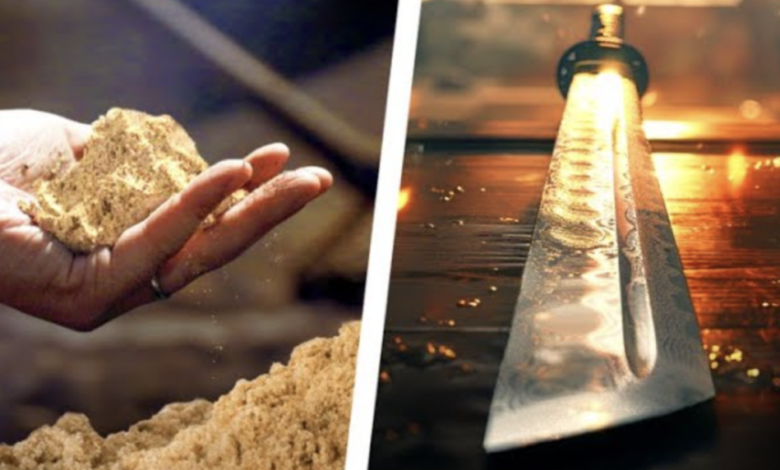How Japanese Masters Turn Sand Into Swords: The Art of Traditional Sword Making from Start to Finish

We made sand think: this phrase is used from time to time to evoke the particular technological wonders of our age, especially since artificial intelligence seems to be back on the slate of possibilities. While there would be no Silicon Valley without silica sand, semiconductors are hardly the first marvel humanity has forged out of that kind of material. Consider the three millennia of history behind the traditional Japanese sword, long known even outside the Japanese language as the katana (literally “one-sided blade”) — or, more to the point of the Veritasium video above, the 1,200 years in which such weapons have been made out of steel. How Japanese Masters Turn Sand Into Swords
In explaining the science of the katana, Veritasium host Derek Muller begins more than two and a half billion years ago, when Earth’s oceans were “rich with dissolved iron.” But then, cyanobacteria started photosynthesizing that iron and creating oxygen as a by-product. This process dropped layers of iron onto the sea floor, which eventually hardened into layers of sedimentary rock.
With few such formations of its own, the geologically volcanic Japan actually came late to steel, importing it long before it could manage domestic production using the iron oxide that accumulated in its rivers, recovered as “iron sand.”
By that time, iron swords would no longer cut it, as it were, but the addition of charcoal in the heating process could produce the “incredibly strong alloy” of steel. Certain Japanese swordsmiths have continued to use steel made with the more or less traditional smelting process you can see performed in rural Shimane prefecture in the video. To the disappointment of its producer, Petr Lebedev, who participates in the whole process, the foot-operated bellows of yore have been electrified, but he hardly seems disappointed by his chance to take up a katana himself. He may have yet to attain the skill of a master swordsman, but understanding every scientific detail of the weapon he wields must make slicing bamboo clean in half that much more satisfying.
Related content:
A Hypnotic Look at How Japanese Samurai Swords Are Made
A Vintage Short Film about the Samurai Sword, Narrated by George Takei (1969)
A Demonstration of Perfect Samurai Swordsmanship
An Origami Samurai Made from a Single Sheet of Rice Paper, Without Any Cutting
Watch the Oldest Japanese Anime Film, Jun’ichi Kōuchi’s The Dull Sword (1917)
How Japanese Things Are Made in 309 Videos: Bamboo Tea Whisks, Hina Dolls, Steel Balls & More
Based in Seoul, Colin Marshall writes and broadcasts on cities, language, and culture. His projects include the Substack newsletter Books on Cities and the book The Stateless City: a Walk through 21st-Century Los Angeles. Follow him on the social network formerly known as Twitter at @colinmarshall.




